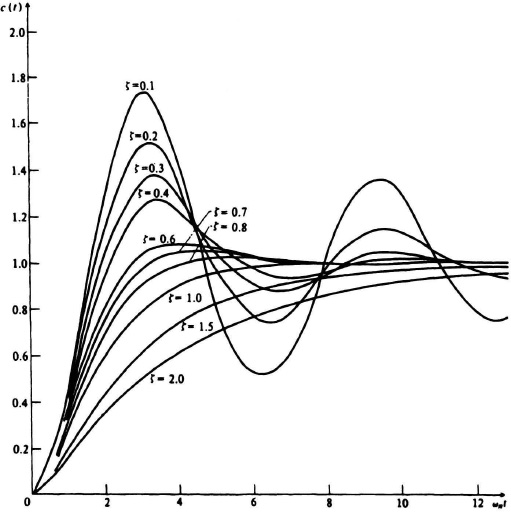4.3. RELATION BETWEEN LOCATION OF ROOTS IN THE s-PLANE AND THE TRANSIENT RESPONSE
We found in the preceding section that complex-conjugate roots located in the left-half of the s-plane, as illustrated in Figure 4.3, resulted in an exponentially damped sinusoidal oscillation as illustrated in Figures 4.2c and 4.4. For the case of second-order roots located on the negative real axis, we obtained the transient responses illustrated in Figures 4.2a and b. It is very interesting to extend our analysis from the preceding section to the location of a second-order control system’s roots in other locations of the s-plane.
Figure 4.4 Transient response curves of a second-order system to a unit step input.
For the case of a pair of complex-conjugate roots located on the imaginary axis, we obtain an oscillation of fixed amplitude. This is the case of simple harmonic motion. For the case of a pair of complex-conjugate roots located in the right half-plane, we obtain an unbounded exponentially growing oscillation. For the case of real roots located in the right half-plane, we obtain an unbounded growing response. These cases are illustrated in Figure 4.6.

